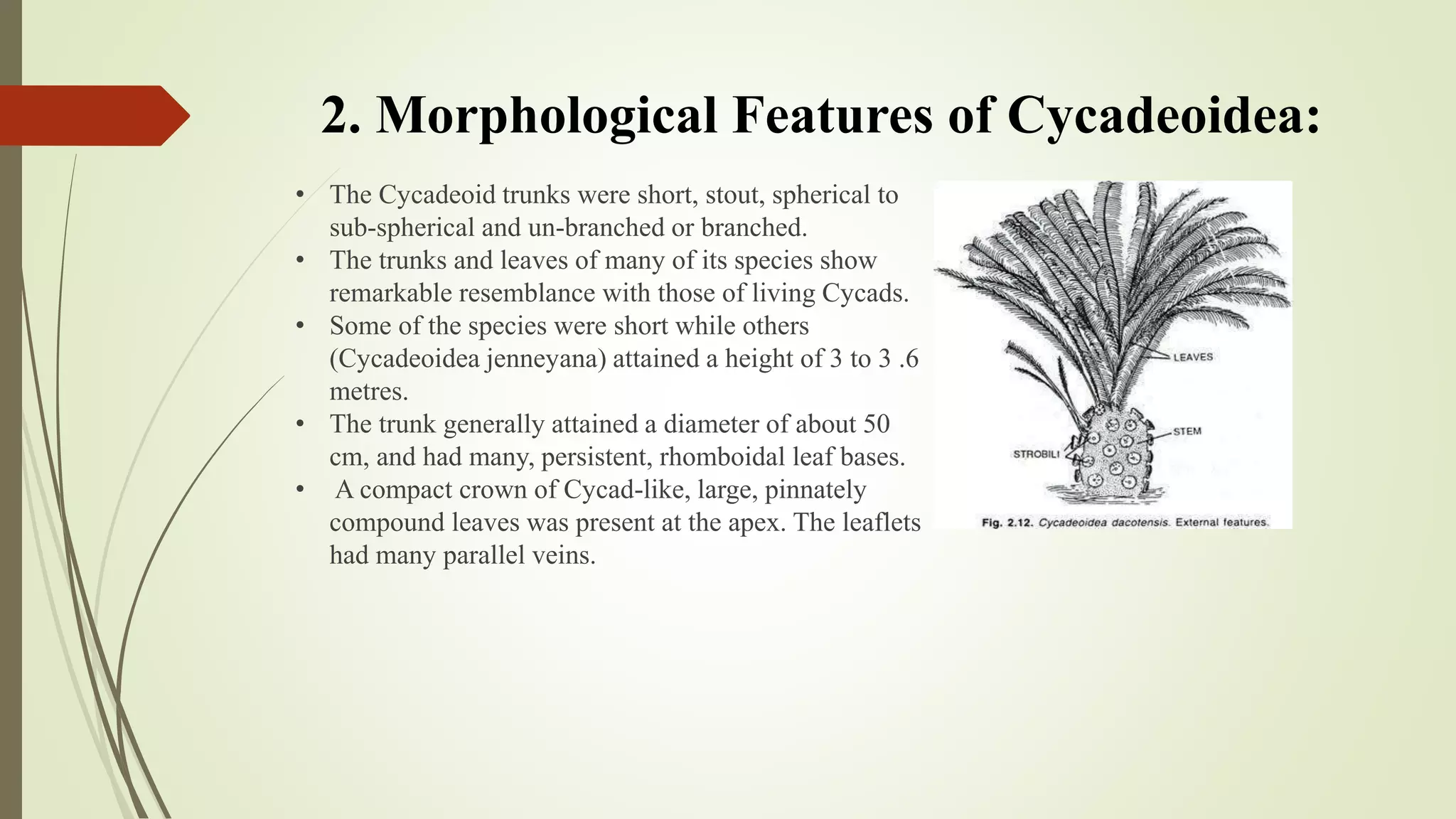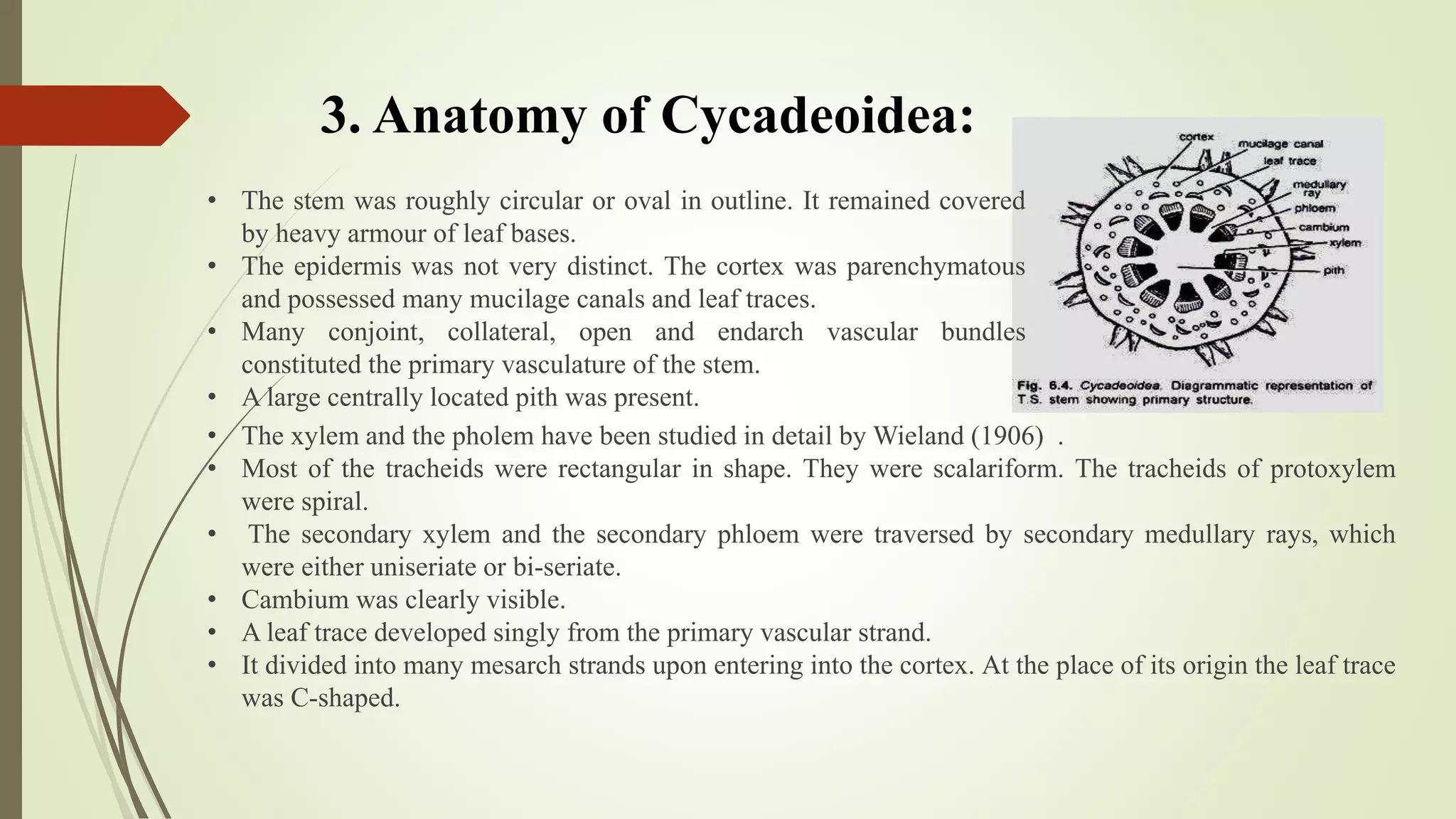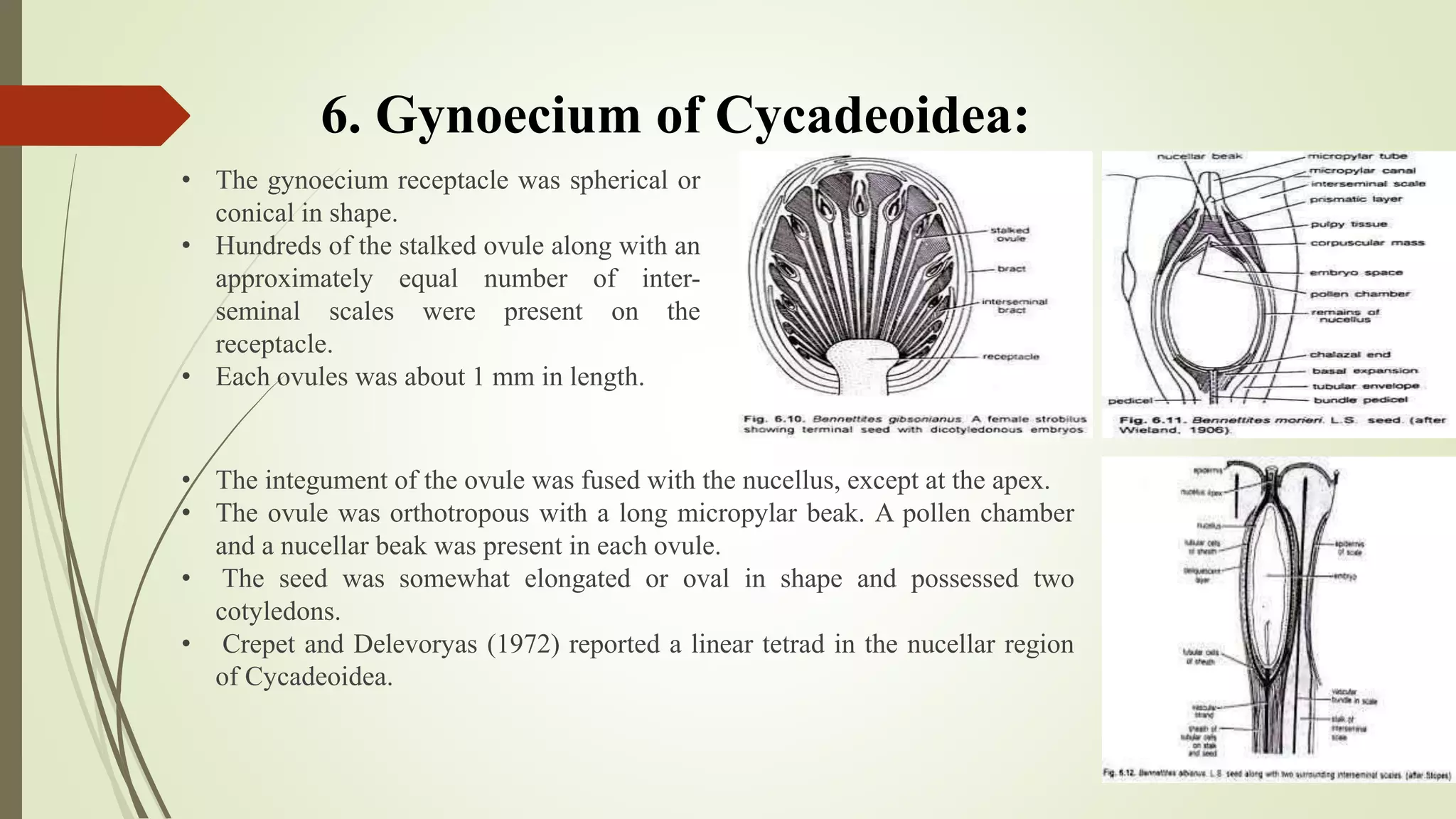This document discusses the morphological features, anatomy, and reproductive organs of Cycadeoidea, an extinct plant group from the Jurassic and Cretaceous periods. Cycadeoidea trunks were spherical and unbranched or branched, resembling modern cycads. The stems had vascular bundles and a large pith. Reproductive organs occurred in clusters and contained both male and female structures. Male structures bore pollen sacs on branching sporophylls. Female structures consisted of ovule-bearing receptacles with hundreds of stalked ovules and scales.






